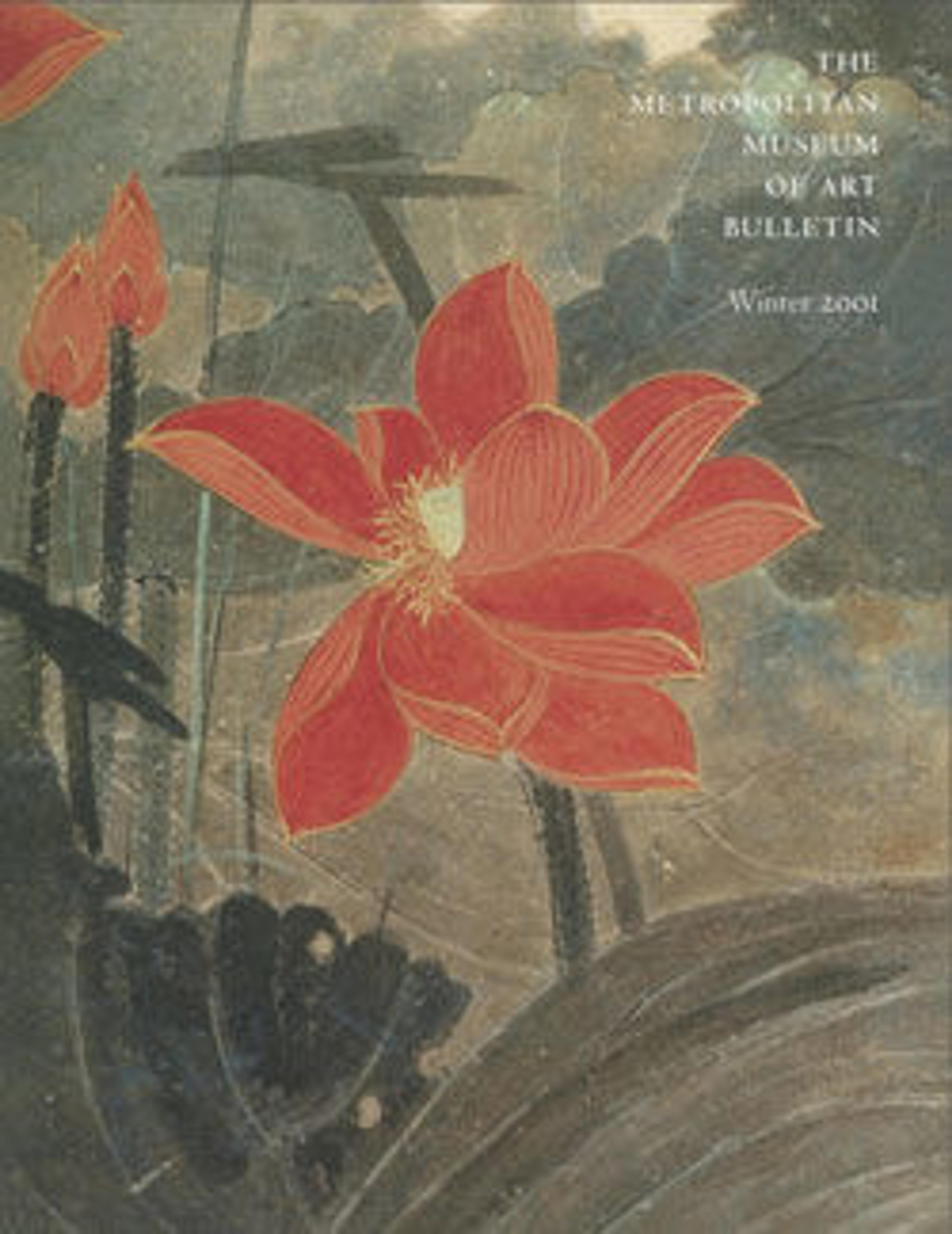Grazing Horse
Xu Beihong was the most influential proponent of Western academic realism in twentieth-century China. Inspired by the political reformer Kang Youwei (1858–1927), who advocated "an integration of Chinese and Western art to create a new era of Chinese painting," Xu traveled to Japan in 1917 to study Western art and returned the following year to become an art instructor at Beijing University. In 1919 Xu became the first government-sponsored student to go to Europe to study art. Until 1927 he studied in Paris and Berlin, mastering an already moribund academic style.
This painting exemplifies Xu's fusion of East and West. While he employed the conventional Chinese medium of brush and ink, his drawing technique was purely Western. Rather than defining the horse with calligraphically energized outlines, he sketched it impressionistically, integrating light and dark washes and uninked areas of paper to suggest light and shadow. The horse's complex pose-foreshortened body, twisting neck, and naturalistically placed legs is deftly rendered with a few well-practiced brushstrokes, while the layered tones of the animal's tail give the impression of movement.
Recalling the tradition of the horse as an emblem of state, Xu's spirited animals appeal to national pride. He painted so many of them that they have become synonymous with his name. Xu made this early example for Qi Baishi's son when going to visit Qi's house. Qi explains in his inscription that Xu failed to bring his seals, which is why the painting lacks an impression.
This painting exemplifies Xu's fusion of East and West. While he employed the conventional Chinese medium of brush and ink, his drawing technique was purely Western. Rather than defining the horse with calligraphically energized outlines, he sketched it impressionistically, integrating light and dark washes and uninked areas of paper to suggest light and shadow. The horse's complex pose-foreshortened body, twisting neck, and naturalistically placed legs is deftly rendered with a few well-practiced brushstrokes, while the layered tones of the animal's tail give the impression of movement.
Recalling the tradition of the horse as an emblem of state, Xu's spirited animals appeal to national pride. He painted so many of them that they have become synonymous with his name. Xu made this early example for Qi Baishi's son when going to visit Qi's house. Qi explains in his inscription that Xu failed to bring his seals, which is why the painting lacks an impression.
Artwork Details
- 清/現代 徐悲鴻 馬圖 軸
- Title:Grazing Horse
- Artist:Xu Beihong (Chinese, 1895–1953)
- Date:dated 1932
- Culture:China
- Medium:Hanging scroll; ink on bark paper
- Dimensions:20 1/2 x 14 3/4 in. (52.1 x 37.5 cm)
- Classification:Paintings
- Credit Line:Gift of Robert Hatfield Ellsworth, in memory of La Ferne Hatfield Ellsworth, 1986
- Object Number:1986.267.192
- Curatorial Department: Asian Art
More Artwork
Research Resources
The Met provides unparalleled resources for research and welcomes an international community of students and scholars. The Met's Open Access API is where creators and researchers can connect to the The Met collection. Open Access data and public domain images are available for unrestricted commercial and noncommercial use without permission or fee.
To request images under copyright and other restrictions, please use this Image Request form.
Feedback
We continue to research and examine historical and cultural context for objects in The Met collection. If you have comments or questions about this object record, please contact us using the form below. The Museum looks forward to receiving your comments.
